
Part 1: Katie Slivovsky, Exhibit Development Director, LGBTQ Access & Inclusion Chair, Chicago Children’s Museum
Something wonderful is brewing in Chicago—and I don’t mean craft beer. I’m talking about the 80-plus staff from over 25 museums who have been exploring how to make their museums more LGBTQ-friendly. We call ourselves CAMP: Chicagoland Alliance of Museums with Pride.
It all started in 2011 when the Chicago Children’s Museum formed its LGBTQ Access & Inclusion Committee. We posted rainbow triangles at every entrance, installed all-gender bathroom signs, held staff trainings with Illinois Safe Schools Alliance, hosted Story Time with Drag Queens (video), added pronouns to our email signatures, and more. We began fielding lots of questions from other museums—and we had plenty of questions of our own—so a handful of us from various museums began meeting a couple of times a year.
At a gathering in early 2017, someone said, “We need a name,” and a few minutes later we set up CAMP. When asked who might take the lead, everyone looked at me, since I had been organizing meetings thus far. I immediately recruited three more CAMP counselors, including David, who wrote Part 2 of this post (below):
Based on our collective experience with other professional gatherings, we developed this format for CAMP meetings:
- Meet once per quarter from 3-5 p.m., on a Monday-Thursday at rotating institutions
- 10-minute “meet and greet” sessions (we always have name tags)
- 45-minute program with a catchy title
- 15-minute Q&A
- 30-minute breakout sessions for small group work
We then began planning the kick-off meeting:
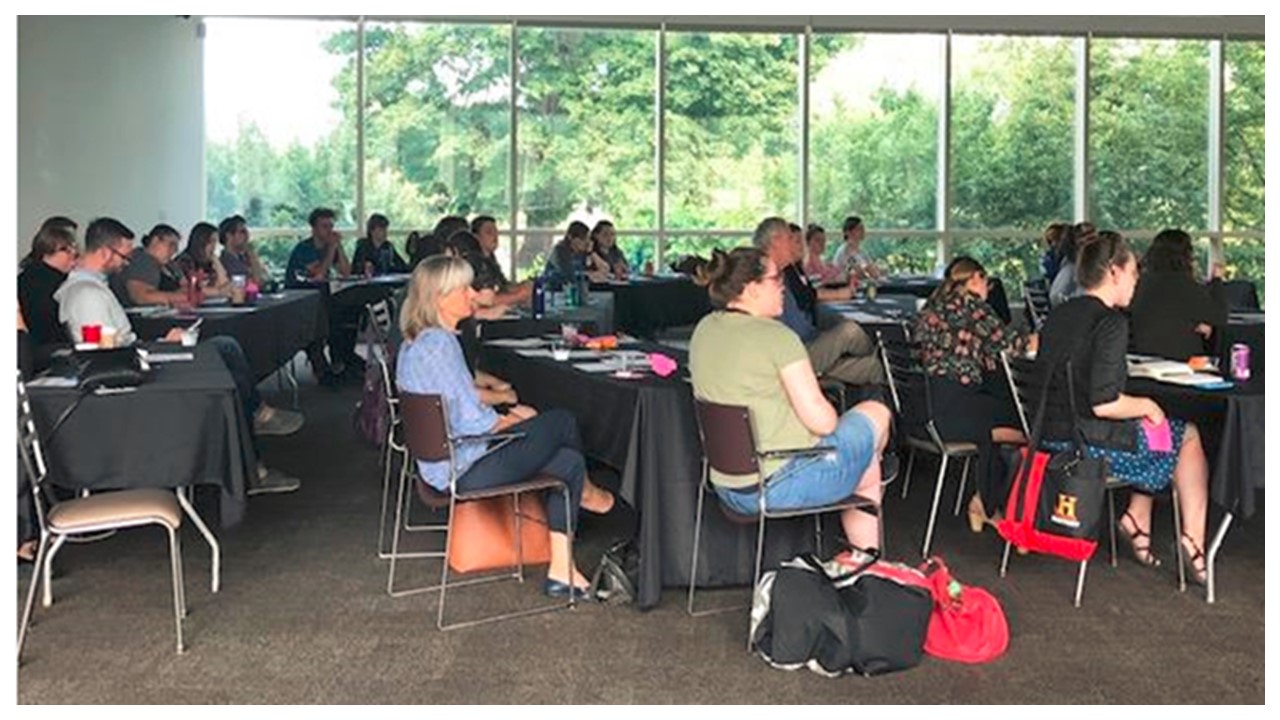
5 keys to CAMP’s success:
1. The need is real.
People are HUNGRY for the useful, doable tips we share and our empowering, “You’ve got this,” approach.
“CAMP provides guidance and a reference for those who want to make change but don’t know how to start or don’t know how to continue.”
—Kathren Lee, Facilitator, Museum of Science and Industry, Chicago and CAMPout Point Person
“CAMP has been an incredible sounding board and resource. We’re able to use each institution’s success stories as case studies to make impactful changes at our home organizations.”
—Jillian Braun, Director, Public Relations, Pronouns: She/Her/Hers, Lincoln Park Zoo
2. Our transparent, inclusive process builds a sense of teamwork and creates buy-in.
Dozens of people submitted ideas about a mission statement, then eight of us from six institutions worked to refine those ideas and create one sentence each, which we proposed to the larger group for approval:
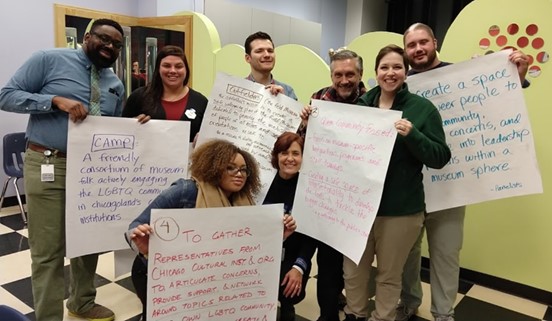
We believe
Chicagoland’s museums are enriched when staff and visitors of all gender expressions, sexual orientations and family configurations are intentionally welcomed and included.
Our mission is to
Inspire, inform and equip Chicagoland’s museum professionals to make their museum environments more welcoming and inclusive for LGBTQ staff and visitors.
We seek to
Support the mission and activities of CAMPout.
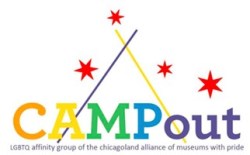
3. CAMPout
After our third regular meeting, we formed CAMPout. This group meets for an hour after each CAMP meeting, focusing on the mission statement they developed:
The mission of CAMPout is to provide an intersectional safe space for self-identifying LGBTQ+ museum professionals where they can find community by sharing experiences, supporting professional development, and engaging the museum community.
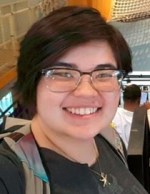
Kathreen Lee, Guest Experiences, Museum of Science and Industry, Chicago; CAMPout point person
With Kathren Lee’s thoughtful and determined leadership, the group created a privacy policy, brainstorms topics for future CAMP meetings, arranges social gatherings, and is planning how CAMP (the larger group) can participate in Chicago’s 2019 PRIDE parade.
4. Representation
The CAMP counselors and CAMPout point person work at five different museums. Two of us are straight allies and three identify as LGBTQ. We are different ages and races, and have very different types of museum jobs. This may help to attract the diverse array of staff who come to CAMP.
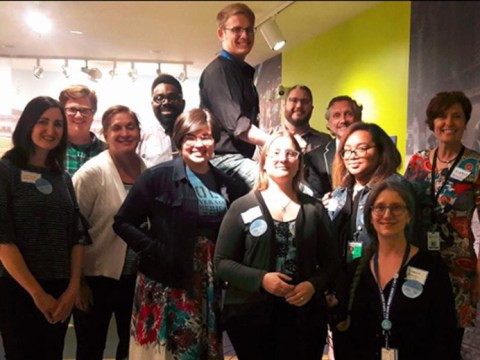
“From day one, CAMP included so many people who are part of the LGBTQ+ community plus allies and supportive institutions and it just keeps growing and getting stronger!”
—Jill Samonte, Accessibility & Inclusion Specialist, Pronouns: she/her/hers, DuPage Children’s Museum
“Every CAMPer has a voice and is valued. We support each other in our personal and professional journeys. The spirit of unity and acceptance is refreshing and a credit to all the awesome individuals who participate.”
—Richard Leas, Membership and Volunteer Manager, The Richard H. Driehaus Museum
5. Meeting Content
At each meeting, we provide snacks, review CAMP’s purpose, and present a well-planned program on a pithy topic. Our programs so far:
- “10 Easy Ways Museums Can Be More LGBTQ-friendly–and Why It Matters.”–an interactive workshop led by Chicago Children’s Museum. Hosted by the Peggy Notebaert Nature Museum.
- “How can I better support my LGBTQ co-workers?”–a panel of LGBTQ museum staff, Q&A. Hosted by The Richard H. Driehaus Museum.
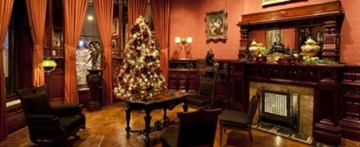
The Richard H. Driehaus Museum - Note: CAMP counselor Richard Leas was a member of this panel. A man in his fifties, he spoke openly about his experiences as a gay employee for the first time at CAMP. He asked us to raise our hands if we had experienced a co-worker, boss, or subordinate die of AIDS. He had experienced the loss of all three. And none of those losses were discussed in the workplace. His story provided important perspective for us all and inspired us to keep moving forward.
- “Small, Medium, Large: Inclusion at Museums of Any Size”–Three speakers from three museums. Hosted by the Museum of Science and Industry, Chicago.
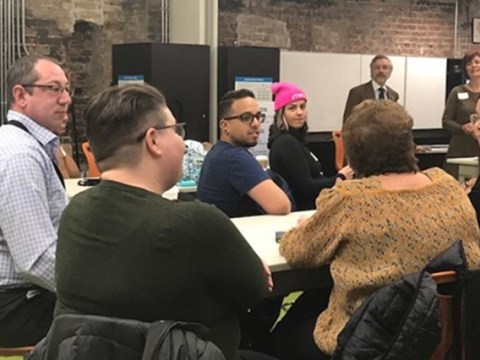
CAMPers discussing challenges and sharing solutions in breakout sessions - “This is How We Do It: Finding your path toward inclusion one step at a time”–10 speakers from 10 museums, each spoke of one action, large or small, such as adding a rainbow sticker to the door of the volunteer office, adding black and brown colors to rainbow signage at museum entrances, forming an LGBTQ affinity group within a museum, working with HR on transgender-inclusive insurance plans, and more. Hosted by the Chicago History Museum.
- “Bathrooms and Beyond: Exploring the experiences of gender-expansive people in museums”–4 speakers: Gearah Goldstein, an LGBTQ advocate and trans woman who co-founded The GenderCool Project; Marie Newman, a former political candidate, LGBTQ advocate and parent of a trans teen; Jennifer Leininger, the program manager at Lurie Children’s Hospital’s Sex and Gender Development Clinic; and Phoenix Matthews, a therapist and scholar who co-founded CRAP (Chicago Restroom Access Project). Hosted by The Field Museum.
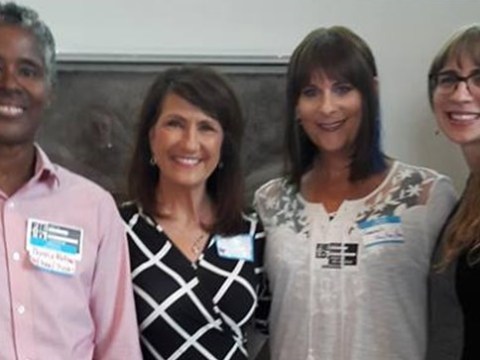
Phoenix Matthews, Marie Newman, Gearah Goldstein, Jennifer Leininger - “How can I advocate for LGBTQ-inclusive policies within my museum?”–Planned for December 2018, upper-level staff from Chicago Children’s Museum will 1) share their museum-wide advocacy policy and 2) provide an overview of laws that protect staff and how to navigate within your institution if laws are not followed. Mid-level staff (yours truly) will share tactics to strategically make effective change within your institution. Entry-level staff from Museum of Science and Industry will share their experience advocating for transgender rights with their Human Resources Department. To be hosted by Chicago Children’s Museum.
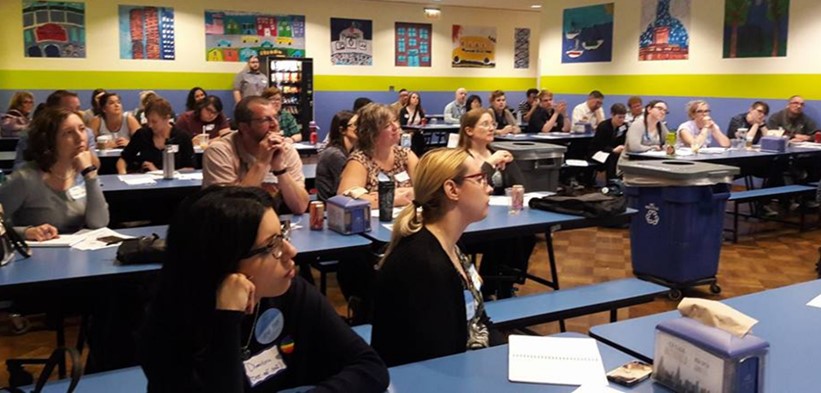
“Because CAMP has a focused audience lens, it allows for a variety of topics to be discussed, which draws in educators, human resource managers, volunteer coordinators, upper management, exhibition design people, visitor services representatives and others. Each walks away with something to keep in mind when planning programs, exhibitions, trainings, welcoming the public, etc.”
—Jean Feit, Park Program Manager, Museums In the Park
Part 2: David Carrasquillo, Administrative Operations Manager, Chicago Academy of Sciences/Peggy Notebaert Nature Museum
Until 1954, when Roger Bannister ran four miles in three minutes and 54.4 seconds, people did not believe a human could run such a distance in less than four minutes. It had never been done before, and in many minds it was simply impossible. Since then the record has been broken well over a thousand times.
I like this story because it illustrates how people often feel something can happen only when they can see others have done it first.
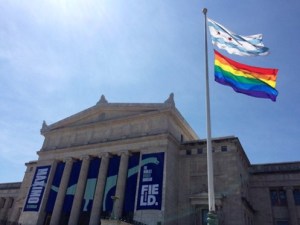
Record-breakers are crucial but the real change happens when the record continues to be broken. Raising a rainbow flag may not be record-breaking, but after that first museum raises a rainbow flag to show solidarity with the LGBTQ community during Pride month, it becomes exceedingly easier for three other museums to do in the following year, and five more museums the year after that. CAMP is a place to share such successes that can then, with a little work, be replicated at other museums and institutions.
I began working in museums when I was sixteen years old. Seeing successful gay, lesbian, and transgender people in leadership roles allowed me to know as a gay teen that there would be a place for me in the world when I grew up. For me, CAMP is a dream come true. The opportunity to be a part of an organization that gathers my peers from all my favorite local museums and cultural institutions to discuss how we can work toward a greater sense of belongingness for all of our LGBTQ coworkers and visitors is a beautiful thing that I do not take for granted.
Skip over related stories to continue reading articleAfter reading about the fantastic inclusion initiatives at Chicago Children’s Museum, I began to ask myself why more museums were not following suit. I then learned that other museums were indeed working to be more inclusive, but I found it difficult to learn about their success and point to them as examples. If only there were a local group of museum professionals able to get together and discuss the inclusion work being done at their museums and share challenges and successes.
Serendipitously, following the “Gateways to Understanding: Diversity, Equity, Accessibility, and Inclusion in Museums” 2017 AAM Annual Meeting and Expo in St. Louis, MO, a small group of attendees and interested folk who were not able to travel to St. Louis met to share and learn from each other. At this meeting CAMP was born.
What is so special about CAMP was modeled from our very first meeting. Our Kickoff celebration was just that, a celebration. We had cake, balloons, and rainbow-color-coordinated sodas and fruit snacks.
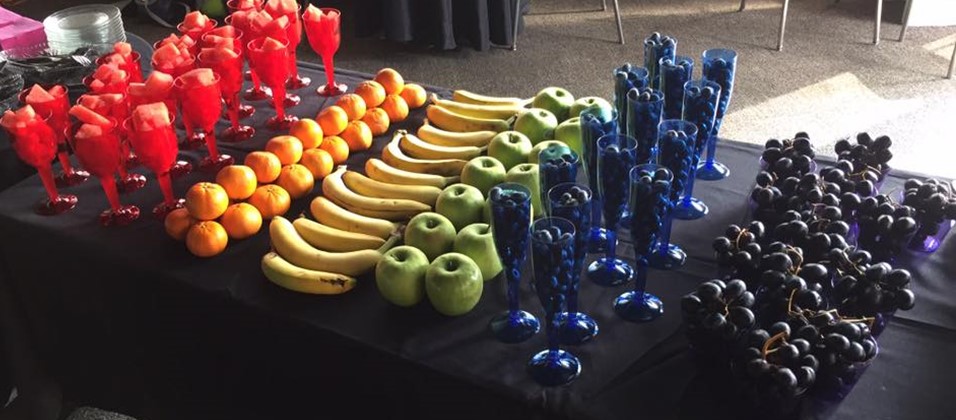
From the beginning we fostered a sense of community with a levity best communicated by the shorthand acronym we use as our name. A number of the people who attended our first program in August 2017 have attended each of the following quarterly programs since.
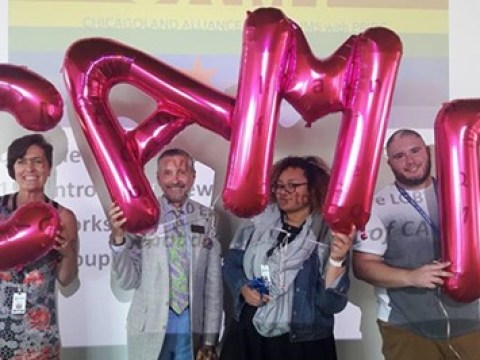
CAMP serves as a place for those from one organization to learn from others which may be a few steps ahead, and how to best move forward with inclusion initiatives without reinventing the wheel. It is also great to see that you do not need to have everything figured out before you take the first steps on an initiative. It is even better to know that you are not alone and that no one has it all figured out.
And though we have not yet incorporated craft beer into a CAMP event, never say never!
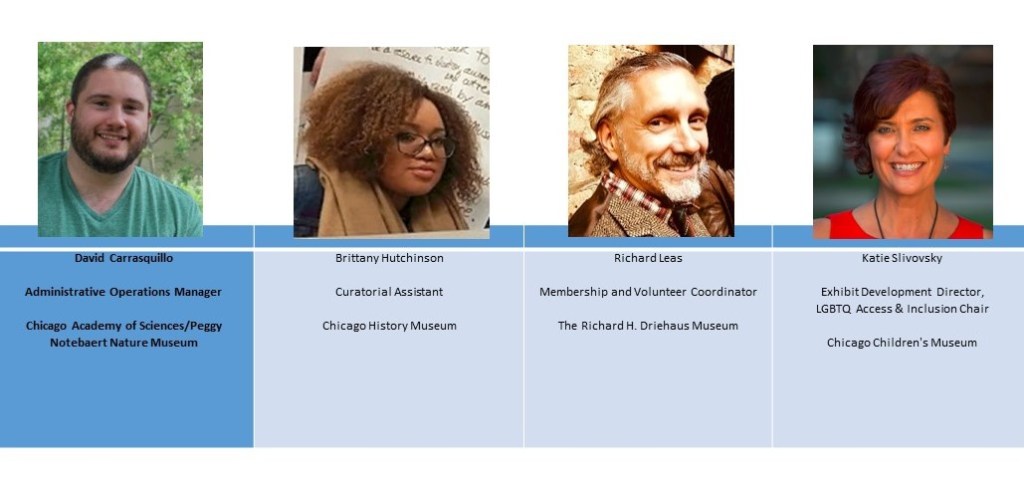
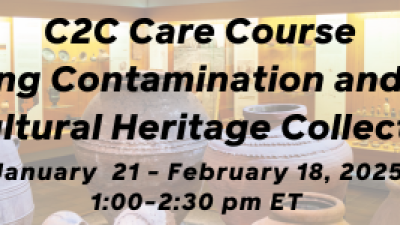



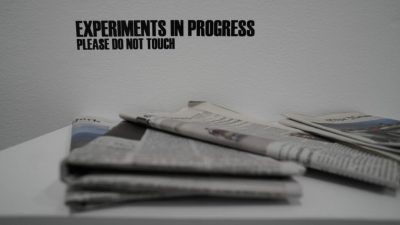
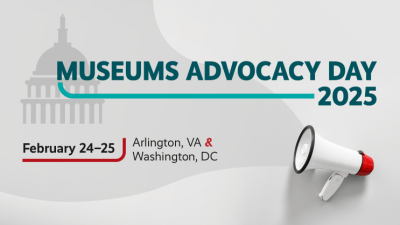
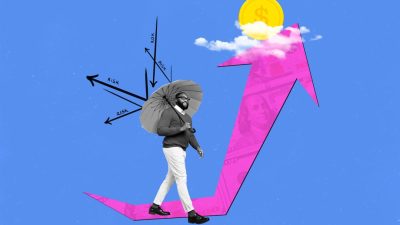
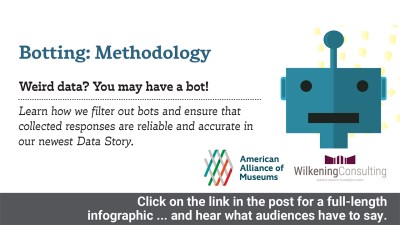
This is high-quality, excellently crafted and inspiring work. So pleased to see this depth of engagement across your community. An example for us all.
Thank you so much for your kind words, Christopher. Feel free to email me with questions at KatieS@ChicagoChildrensMuseum.org I see that you’re at a library. I’m doing a training for all Chicago Public Library staff, “10 Easy Ways to Be More LGBTQ-friendly–and Why it Matters.” Best to you!